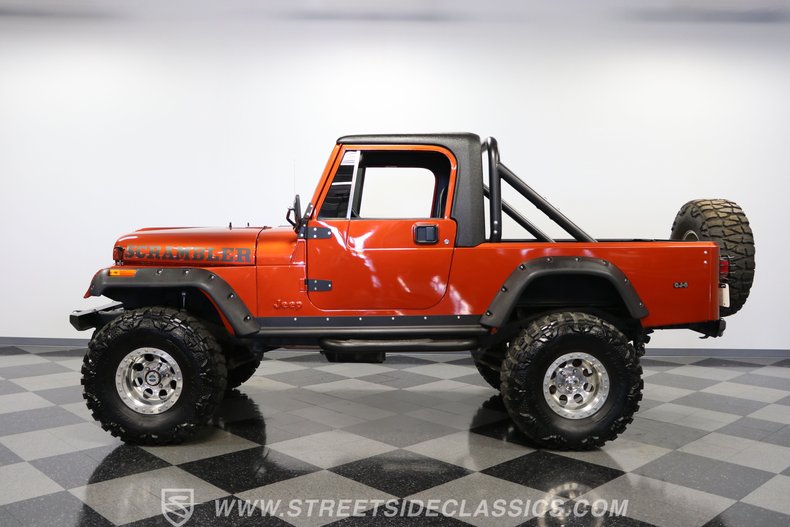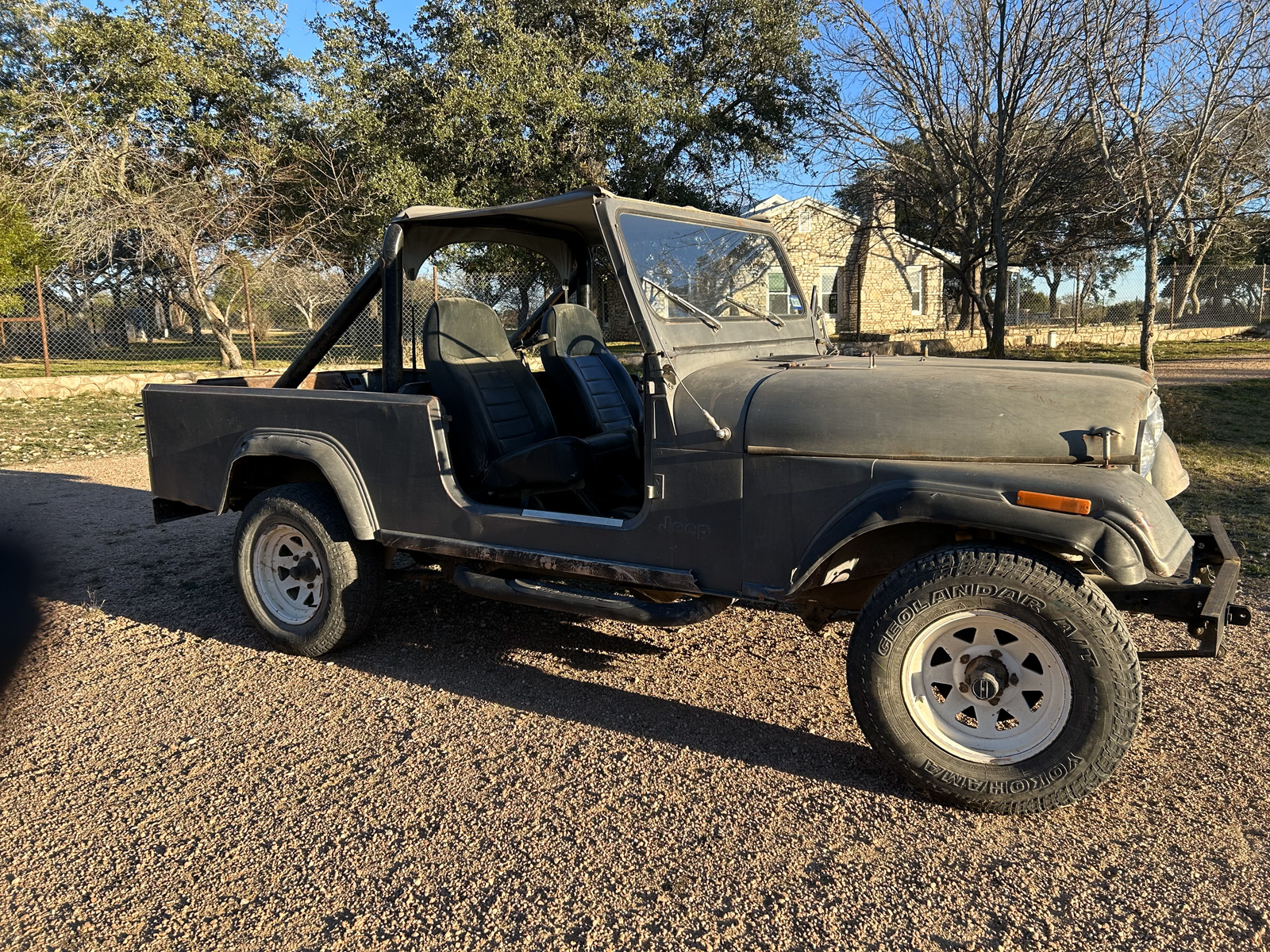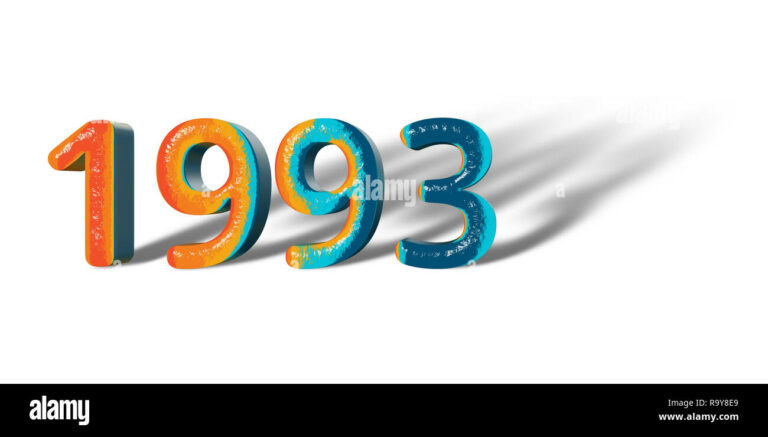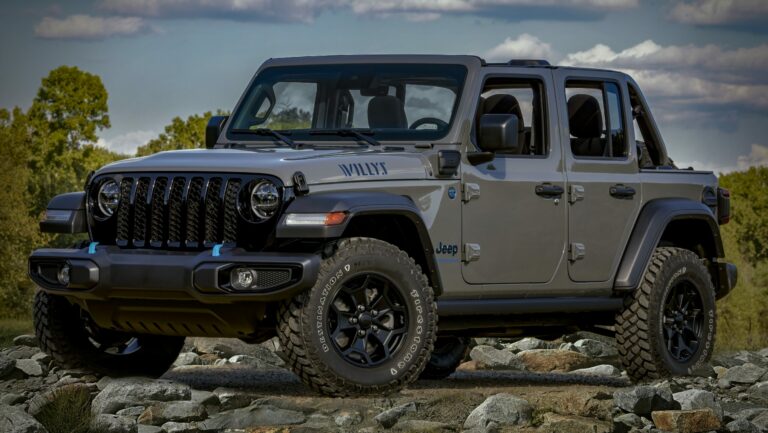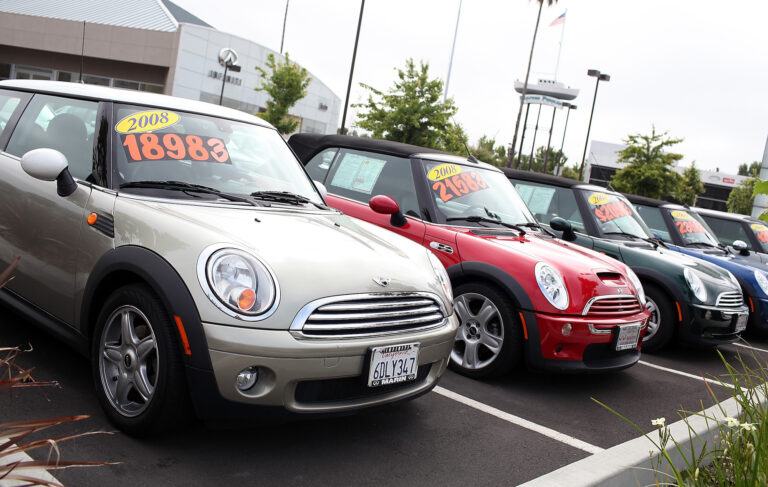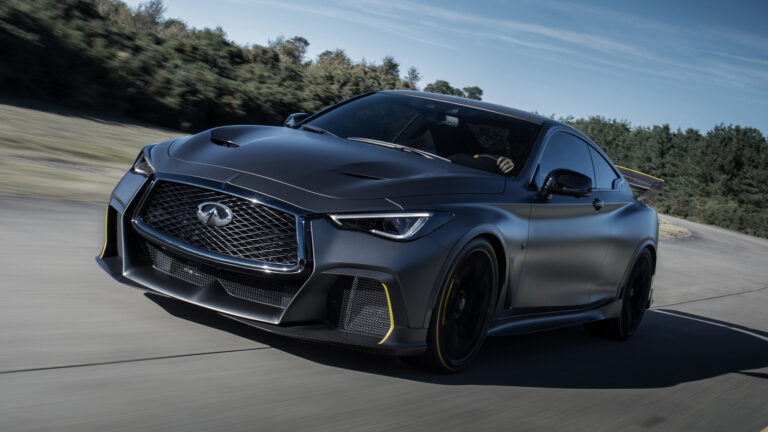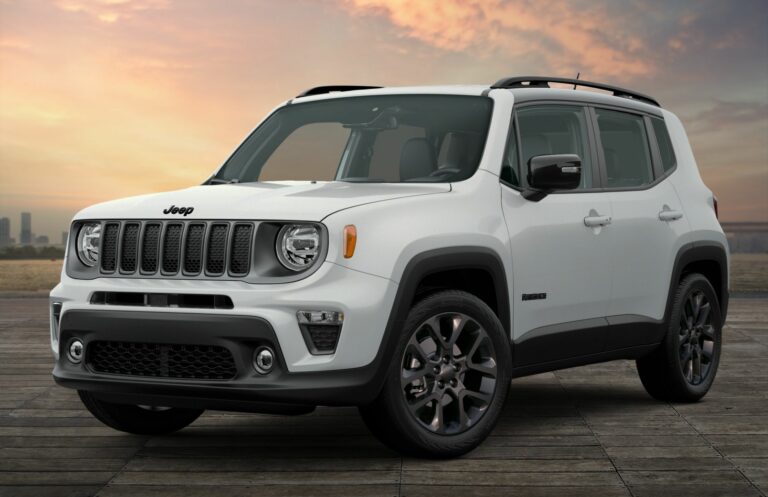Jeep Scrambler Project For Sale: Your Blueprint to a Legendary Build
Jeep Scrambler Project For Sale: Your Blueprint to a Legendary Build jeeps.truckstrend.com
The very mention of "Jeep Scrambler" ignites a spark in the heart of automotive enthusiasts. More than just a vehicle, the Jeep CJ-8 Scrambler is a rugged icon, a symbol of freedom, utility, and an unparalleled connection to the open road and untamed trails. Its unique blend of classic CJ aesthetics with a longer wheelbase and a small pickup bed sets it apart, making it a coveted classic for collectors and off-roaders alike. But what happens when you encounter a "Jeep Scrambler Project For Sale"? This isn’t an offer for a showroom-ready vehicle; it’s an invitation to embark on an exhilarating journey of restoration, customization, and mechanical mastery.
A Jeep Scrambler project for sale represents an opportunity to acquire one of these rare beasts in a state of disrepair, incomplete, or partially disassembled. It’s a blank canvas for the discerning enthusiast who possesses the vision, the skills, and the dedication to breathe new life into a piece of automotive history. This comprehensive guide will navigate you through the intricate world of acquiring and tackling a Scrambler project, offering insights into its allure, the practicalities involved, and the immense satisfaction that awaits at the end of the build.
Jeep Scrambler Project For Sale: Your Blueprint to a Legendary Build
The Allure of the Jeep Scrambler CJ-8
Introduced in 1981, the CJ-8 Scrambler was Jeep’s answer to those who loved the classic CJ-7 but desired more cargo space and utility. Essentially a stretched CJ-7 with a small pickup bed, it offered a unique blend of open-air adventure and light-duty hauling capability. Its relatively short production run (1981-1986) and lower sales figures compared to its CJ-7 sibling have made it significantly rarer and, consequently, more desirable in today’s classic car market.
The Scrambler’s appeal extends beyond its rarity. It retains the rugged, no-nonsense charm of the CJ series, with removable doors, a fold-down windshield, and legendary off-road prowess. For many, owning a Scrambler is about owning a piece of Americana, a vehicle that embodies adventure and independence. A "project" Scrambler, therefore, is not just a vehicle; it’s a dream waiting to be realized, a chance to infuse your personality into a timeless machine and create a truly bespoke off-road legend or a stunning showpiece.
Understanding "Project For Sale": What to Expect
When a Jeep Scrambler is listed as a "project for sale," it signifies that the vehicle requires significant work to become roadworthy or fully functional. The condition can vary wildly, and understanding these categories is crucial for setting realistic expectations and budgeting:
- Basket Case: This is the most challenging and often the cheapest upfront. The vehicle is typically disassembled, with parts scattered or missing entirely. It might be a frame with a body tub resting on it, or just boxes of components. Expect extensive rust, unknown mechanical condition, and a monumental effort to catalog, source, and reassemble parts.
- Rolling Chassis: This refers to a Scrambler with a complete frame, axles, suspension, and steering, but often without a body, engine, or transmission. It’s a solid foundation for a custom build, allowing you to choose your desired powertrain and body components.
- Rough Runner/Driver (but a project): The vehicle might start and move under its own power, but it’s far from ready for regular use. Expect significant mechanical issues (engine, transmission, brakes, suspension), extensive body rust, electrical problems, and a completely worn-out interior. While it offers a starting point, don’t underestimate the scope of work.
- Partially Restored (Abandoned Project): Someone else started the restoration but couldn’t finish. This can be a goldmine or a money pit. If the previous work was done correctly and documented, it could save you time and money. However, poorly executed repairs or hidden issues can lead to more problems than starting from scratch.
- "Solid" Project: This is perhaps the most desirable project type. The vehicle might be mostly complete with minimal structural rust, but still requires a full, comprehensive restoration of all systems (drivetrain, electrical, interior, paint, etc.). It offers a strong foundation without too many major surprises.

Regardless of the category, expect to invest significant time, money, and effort. A project vehicle is not for the faint of heart, but the rewards can be immense.
Benefits of Taking on a Scrambler Project
Why would anyone willingly take on such a demanding endeavor? The benefits are compelling for the right individual:
- Cost Savings (Potentially): The upfront purchase price of a project Scrambler is significantly lower than a fully restored or turn-key example. While total costs can add up, smart sourcing of parts and DIY labor can result in a beautifully restored vehicle for less than market value.
- Unparalleled Customization: This is perhaps the biggest draw. You have complete control over every aspect of the build. Want a modern engine swap for more power and reliability? A specific suspension lift and tire combination for extreme off-roading? A bespoke interior with modern amenities? A project allows you to build your dream Scrambler exactly to your specifications.
- Invaluable Learning Experience: From mechanical systems to bodywork, welding, and electrical troubleshooting, a project Scrambler offers an unparalleled hands-on learning opportunity. You’ll gain practical skills and a deep understanding of your vehicle.
- Immense Pride of Ownership: There’s an unmatched sense of accomplishment that comes from driving a vehicle you’ve personally restored or built from the ground up. It’s a testament to your dedication and skill.
- Potential Investment: A meticulously restored or custom-built Jeep Scrambler can appreciate in value, making it not just a passion project but a tangible asset.

Key Considerations Before Diving In
Before you jump headfirst into a Scrambler project, a thorough self-assessment is essential. This is where dreams meet reality:
- Budget Beyond Purchase Price: The purchase price is just the tip of the iceberg. Factor in parts (engine, transmission, axles, suspension, brakes, electrical, body panels, interior components), tools (specialized and general), paint and bodywork materials, and potentially professional labor for tasks beyond your skill set. Always add a 20-30% contingency for unexpected issues.
- Skill Level: Do you have mechanical aptitude? Are you comfortable with welding, bodywork, and electrical wiring? If not, are you willing to learn, or do you have the budget to hire professionals for specific tasks? Be honest about your capabilities.
- Time Commitment: Restoring a vehicle is not a weekend job. It can take months, even years, of dedicated effort, often consuming evenings and weekends. Ensure you have the sustained motivation and available time.
- Workspace: Do you have a suitable garage or workshop with enough space for the vehicle, parts, and tools? Adequate lighting, ventilation, and power are crucial.
- Parts Availability: While many CJ parts are readily available thanks to a robust aftermarket, Scrambler-specific components (like the hardtop, bulkhead, and bed panels) can be rarer and more expensive. Research availability and cost before committing.
- Emotional Resilience: There will be frustrating moments, unexpected setbacks, and times when you feel overwhelmed. A successful project requires patience, persistence, and a problem-solving mindset.
How to Evaluate a Jeep Scrambler Project
A meticulous inspection is paramount when considering a project Scrambler. Don’t let enthusiasm blind you to critical flaws:
- Thorough Visual Inspection:
- Frame: The most critical component. Inspect for rust, cracks, previous shoddy repairs, or bends. A severely rusted or twisted frame can be a deal-breaker or require extensive, costly fabrication.
- Body: Check for rust in common areas: floorboards, rocker panels, fenders, rear bed, tailgate, and cowl. Look for excessive Bondo (body filler) indicating hidden rust or collision damage.
- Drivetrain (if present): Look for fluid leaks, obvious damage, or signs of severe wear. Ask about its running condition, but assume it will need a rebuild.
- Electrical: Check for hacked wiring, corrosion, or missing components.
- Interior: Assess the condition of seats, dashboard, gauges, and trim. Many items will likely need replacement.
- Documentation: Verify the VIN number on the frame and body matches the title. Ensure the title is clear and transferable. Ask for any available service records or previous build notes.
- Inventory Missing Parts: Create a list of everything that’s missing or obviously needs replacement. This helps with initial budgeting.
- Ask Questions: Why is the seller selling? What work has been done? What are the known issues? What challenges did they face?
- Bring an Expert: If possible, bring a knowledgeable friend or a professional mechanic/restorer for a second opinion. They can spot issues you might miss.
- Don’t Rush: Take your time, don’t feel pressured. If it doesn’t feel right, walk away. There will always be other projects.
Tips for a Successful Scrambler Project
- Plan, Plan, Plan: Before turning a single wrench, research your build. Decide on the final vision (stock restoration, custom off-roader, street cruiser). Create a detailed budget and a realistic timeline.
- Start with a Solid Foundation: Prioritize getting the frame and body rust-free and structurally sound. These are the hardest and most expensive parts to fix later.
- Document Everything: Take "before" photos, document every step of the disassembly and reassembly with photos and notes. Keep all receipts. This helps with reassembly and adds value for potential future sale.
- Invest in Good Tools: Quality tools make the job easier, safer, and more enjoyable. They are an investment that pays dividends.
- Join the Community: Online forums (e.g., JeepForum, Pirate4x4, specific Scrambler groups) are invaluable resources for advice, troubleshooting, and finding parts.
- Don’t Get Overwhelmed: Break the project down into smaller, manageable tasks. Celebrate small victories.
- Be Realistic: Understand that unforeseen challenges will arise. Embrace problem-solving as part of the process.
Potential Challenges and Solutions
- Extensive Rust:
- Solution: Assess if it’s repairable. If not, consider a frame swap or replacing major body panels. Rust encapsulators (like POR-15) can protect treated surfaces.
- Missing/Obscure Parts:
- Solution: Leverage online forums, specialized Jeep salvage yards, aftermarket reproduction companies, and even custom fabrication shops.
- Budget Overruns:
- Solution: Stick to your budget strictly. Prioritize essential repairs over cosmetic upgrades initially. DIY where possible to save on labor costs.
- Lack of Expertise:
- Solution: Utilize shop manuals, online tutorials, YouTube videos, and seek advice from experienced builders on forums. Don’t be afraid to hire a professional for critical tasks like engine rebuilding or complex welding if it’s beyond your skill.
- Motivation Slump:
- Solution: Take breaks. Work on a different part of the project. Revisit your "dream" vision board. Attend Jeep shows for inspiration.
Practical Advice and Actionable Insights
Before you even look at a project Scrambler, perform a brutally honest self-assessment. Are you genuinely prepared for the financial commitment, the time sink, and the inevitable frustrations? Do you have the necessary space, tools, and a basic understanding of automotive mechanics? If the answer to any of these is a hesitant "maybe," then perhaps a project isn’t for you, or you need to plan to outsource significant portions of the work.
Once committed, establish your ultimate goal for the Scrambler. Will it be a trail monster, a pristine show vehicle, or a reliable daily driver? This vision will guide every decision, from engine choice to paint color. Don’t be afraid to ask for help or admit when something is beyond your current skill set. The Jeep community is incredibly supportive, and leveraging that knowledge can save you countless headaches and dollars. Embrace the journey; the restoration process is as much a part of the Scrambler experience as driving the finished product.
Table Price: Estimated Jeep Scrambler Project Costs
Please note that these are estimated ranges and can vary wildly based on location, market demand, the seller’s urgency, and the specific condition of the vehicle. These prices represent the initial purchase price, not the total cost of restoration.
| Project Type/Condition | Description | Estimated Purchase Price Range (USD) | What to Expect (Effort/Cost to Finish) | Ideal Buyer |
|---|---|---|---|---|
| Basket Case / Parts Car | Disassembled, heavily rusted, many missing components, likely not rolling. Frame may be compromised. | $1,500 – $5,000 | Highest total cost; extensive fabrication, parts sourcing, complete overhaul of all systems. | Expert fabricator, deep pockets, long-term commitment, seeks maximum customization. |
| Rolling Chassis | Frame, axles, suspension, steering. No body, engine, or transmission. May have some ancillary parts. | $3,000 – $8,000 | High effort; requires complete drivetrain, body, interior. Ideal for custom engine swaps/builds. | Custom builder, seeking specific powertrain, comfortable with extensive assembly. |
| Rough Runner/Driver | Starts & moves, but needs major mechanical (engine, trans, brakes), extensive bodywork, and full interior. | $6,000 – $15,000 | Medium-high total cost; full restoration of all systems. Easier to assess initial condition. | Enthusiast with solid mechanical skills, moderate budget, seeking a "complete" starting point. |
| Partially Restored | Someone started a restoration but stopped. Condition of previous work varies wildly (good to poor). | $8,000 – $25,000 | Variable effort; can be a great deal if previous work is high quality, or a money pit if not. | Buyer who can accurately assess previous work, good mechanical/body skills. |
| "Solid" Project | Mostly complete, minimal structural rust, but needs full restoration of all systems (cosmetic/mech). | $12,000 – $30,000+ | Medium effort; still a full restoration, but fewer major structural surprises. Easier starting point. | Serious restorer, looking for a strong foundation with fewer unknown major issues. |
Disclaimer: These are general estimates. Actual prices are subject to negotiation, market fluctuations, and the specific details of each individual project.
Frequently Asked Questions (FAQ)
Q: Is a Jeep Scrambler project a good investment?
A: Potentially, yes. Well-restored or tastefully customized Scramblers command high prices due to their rarity and iconic status. However, it’s an investment of time and passion, and your final cost might exceed market value if you pay for all labor. DIY labor significantly increases the return on investment.
Q: How long does a Scrambler restoration typically take?
A: This varies wildly. A full, body-off restoration by an amateur working evenings and weekends can take 2-5 years or more. A simpler refresh might take 6-12 months. Professional shops can complete them faster, but at a much higher cost.
Q: What are the biggest challenges in a Scrambler project?
A: Rust repair (especially frame and body tub), sourcing rare Scrambler-specific parts, unexpected mechanical issues, and managing the overall budget and timeline are common challenges. Maintaining motivation during setbacks is also key.
Q: Can I daily drive a restored Scrambler?
A: Yes, many people do! With proper restoration, modern upgrades (e.g., fuel injection, better brakes, power steering), and regular maintenance, a Scrambler can be a reliable and enjoyable daily driver.
Q: Where can I find parts for a Scrambler project?
A: Major aftermarket Jeep parts retailers (e.g., Quadratec, Morris 4×4) offer many CJ-compatible parts. For Scrambler-specific or OEM parts, check online forums, Facebook groups, eBay, specialized Jeep salvage yards, and reproduction parts manufacturers.
Q: What’s the main difference between a CJ-7 and a CJ-8 Scrambler?
A: The primary difference is the wheelbase and body. The CJ-8 Scrambler has a longer wheelbase (103.5 inches vs. 93.5 inches for the CJ-7) and features a small pickup bed behind the passenger compartment, making it more utilitarian than the standard CJ-7.
Conclusion
The "Jeep Scrambler Project For Sale" is more than just an advertisement; it’s an opportunity to engage in a deeply rewarding automotive adventure. It’s a chance to rescue a piece of motoring history, to learn invaluable skills, and to pour your passion into creating a truly unique vehicle that reflects your vision. While the path to completion can be long, challenging, and demanding of both your resources and your patience, the ultimate reward—the roar of the engine, the wind in your hair, and the pride of driving a legendary Jeep Scrambler you brought back to life—is an experience unlike any other. For the dedicated enthusiast, a Scrambler project isn’t just a purchase; it’s a commitment to crafting a legacy, one wrench turn at a time.
